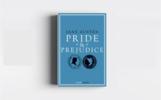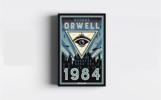Leo Tolstoy's "War and Peace" stands as a monumental
achievement, an expansive epic that not only chronicles
the tumultuous events of the Napoleonic era but also
delves into the profound complexities of human
existence. Published in serialized form between 1865 and
1869, this Russian masterpiece is celebrated for its
scope, depth, and philosophical inquiries. As we
navigate the vast landscape of "War and Peace," it
becomes evident that Tolstoy's work is not merely a
historical novel but a profound exploration of the human
condition, war, society, and the inexorable march of
time. The intricacies of character development, the
panoramic view of history, and the philosophical
reflections firmly establish "War and Peace" among the
top books of all time.
At the
heart of "War and Peace" lies Tolstoy's ambitious
endeavor to depict the grand tapestry of history during
the Napoleonic Wars. The novel spans the years 1805 to
1812, capturing the sweeping changes in Europe and
Russia during this transformative period. Tolstoy
meticulously weaves historical events, political
maneuverings, and military campaigns into the narrative
fabric, offering readers a panoramic view of the era.
The military aspects of the novel, particularly the
Battle of Borodino, are vividly rendered, showcasing
Tolstoy's commitment to historical accuracy and
attention to detail. The descriptions of war are not
glorifications but stark portrayals of its chaos,
brutality, and the impact on individuals. By
interweaving historical events with fictional
characters, Tolstoy creates a narrative that transcends
the boundaries of a traditional historical novel,
immersing readers in the tumultuous currents of the
time.
The depiction of Russian society during the
early 19th century is equally compelling. From the
salons of St. Petersburg to the rural estates, Tolstoy
explores the social dynamics, class structures, and
cultural norms of the time. The novel becomes a mirror
reflecting the complexities of a society in transition,
grappling with the clash of tradition and modernity.
"War and Peace" is renowned for its rich tapestry of
characters, each imbued with depth, nuance, and
complexity. Tolstoy's exploration of human nature
extends beyond the confines of archetypes, presenting
characters who evolve, struggle, and confront the
existential questions that define the human experience.
Pierre Bezukhov, Andrei Bolkonsky, and Natasha
Rostova are central figures whose personal journeys
mirror the broader societal shifts occurring around
them. Pierre's philosophical quests, Andrei's
existential contemplations, and Natasha's emotional
tumult contribute to a multi-faceted exploration of
human psychology.
Tolstoy's characterizations are
not limited to the nobility; the novel introduces
readers to a diverse array of personalities spanning
different social classes. From the ambitious social
climber Anatole Kuragin to the wise and compassionate
peasant Platon Karataev, Tolstoy creates a mosaic of
humanity that transcends social boundaries.
The
character of Prince Andrei, in particular, undergoes a
profound transformation, mirroring Tolstoy's own
philosophical evolution. His disillusionment with
societal expectations and search for meaning reflect
Tolstoy's exploration of existential themes that
resonate with readers across time and cultures.
Beneath the surface of historical events and
character dramas, "War and Peace" unfolds as a
philosophical inquiry into the nature of existence, free
will, and the forces shaping human destinies. Tolstoy's
own philosophical reflections permeate the narrative,
creating a distinctive blend of fiction and
philosophical discourse.
The character of Pierre
Bezukhov becomes a vessel for Tolstoy's philosophical
musings. Pierre's existential crises, spiritual quest,
and engagement with Freemasonry serve as a conduit for
Tolstoy to explore profound questions about the meaning
of life, morality, and the pursuit of happiness. The
novel's philosophical interludes, such as the famous
"War is Peace" essay, provide readers with intellectual
fodder that elevates "War and Peace" beyond a
conventional historical novel.
Tolstoy's
rejection of deterministic historical forces and his
emphasis on the importance of individual agency
challenge prevailing ideas about the inevitability of
historical outcomes. The novel suggests that personal
choices, often made in moments of seemingly
inconsequential significance, have far-reaching
consequences that shape the course of history.t
One of the striking features of "War and Peace" is
Tolstoy's innovative approach to narrative structure,
where time becomes a fluid and multifaceted construct.
The novel defies linear chronology, incorporating
flashbacks, historical analysis, and philosophical
digressions that disrupt traditional narrative
conventions.
Tolstoy's use of non-linear time
reflects his belief in the interconnectedness of past,
present, and future. Events from different periods
overlap and intersect, creating a narrative mosaic that
mirrors the complexity and interdependence of historical
processes. This unconventional approach invites readers
to engage with time as a dynamic force that shapes human
experiences.
The novel's temporal fluidity also
aligns with Tolstoy's exploration of the cyclical nature
of history. As characters grapple with personal and
societal changes, the novel suggests patterns of
recurrence and continuity that transcend individual
lifetimes. Time, in Tolstoy's vision, becomes a
continuum where the echoes of the past reverberate in
the present, influencing the trajectory of the future.
Tolstoy's narrative technique in "War
and Peace" is characterized by a distinctive form of
immersive realism. The author's presence is palpable
throughout the novel, as Tolstoy occasionally addresses
the reader directly, providing historical commentary,
and reflecting on the nature of his own narrative
endeavor.
This narrative style contributes to the
immersive quality of the storytelling. Tolstoy's
engagement with the reader fosters a sense of intimacy,
inviting them to become active participants in the
exploration of history and philosophy. The novel
transcends the boundaries of fiction, blurring the lines
between the author's voice and the characters'
perspectives.
Tolstoy's realism extends beyond
historical accuracy to a psychological realism that
captures the intricacies of human thought and emotion.
The characters' internal monologues, moments of
introspection, and psychological insights add depth and
authenticity to the narrative, creating a profound
connection between the reader and the fictional world.
"War and Peace" has left an indelible mark on literature
and continues to be regarded as one of the greatest
novels ever written. Its influence extends beyond the
realm of fiction, impacting fields as diverse as
philosophy, history, and literary theory. Tolstoy's
exploration of war, humanity, and time has inspired
generations of writers, scholars, and thinkers.
The novel's adaptability to different cultural contexts
and its enduring relevance speak to its universality.
Translations, adaptations, and reinterpretations of "War
and Peace" have proliferated across languages and
mediums, attesting to the timeless resonance of
Tolstoy's magnum opus.
In the vast expanse of literature, "War and Peace" stands as a literary Everest, a towering achievement that invites readers to ascend the peaks of history, philosophy, and human experience. Tolstoy's masterful interweaving of historical events, profound character studies, philosophical reflections and innovative narrative.






